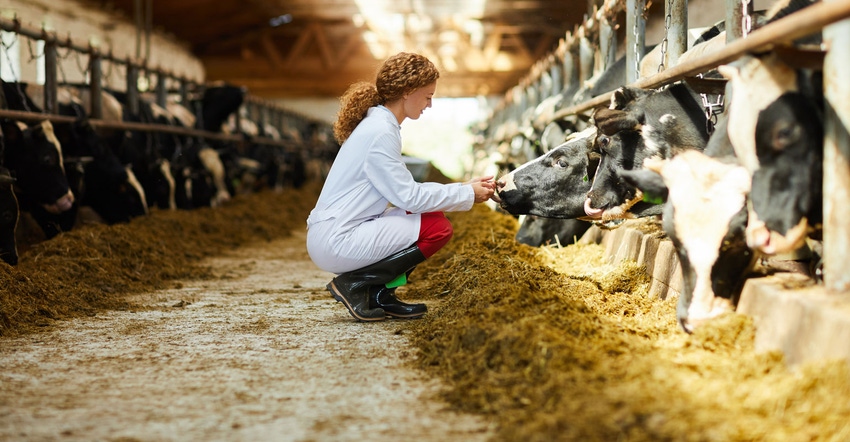March 12, 2020

No one expects to have a farm emergency, but you should be prepared for one. Most farm accidents involving livestock are due to human error. Inexperience, lack of training and poor judgment can all be factors that result in animal or human injury.
Livestock prefer routine, and simple deviations from their normal routine can cause an animal to react in an unexpected manner. A cow will naturally try to reassert herself back to her normal routine, and that may cause her to react abnormally, such as jumping a fence or charging a person.
Training employees in safe animal handling practices will reduce the chances of an accident. Understanding animal behavior and flight zones, and how cattle see and hear, will help employees anticipate how a cow will react in a variety of situations.
Employee training should also include procedures to follow if an accident happens. Employees should know who to call and understand how to address the situation. Employees should be trained to select the proper equipment for addressing the emergency and how to properly use it. Revising training procedures on a regular basis will keep employees updated on your farm protocols. Your farm protocols regarding cattle handling should implement the National FARM program standards. FARM stands for Farmers Assuring Responsible Management.
Assess, then address
Sometimes cows act unpredictably no matter how carefully you or your employees are handling them. When an accident happens, it is important to assess the situation before trying to address it.
In the case where a cow becomes immobile or trapped, our first thought is to rescue her immediately. One should first assess whether you could get injured trying to move or assist her. A cow struggling to free herself from an emergency situation will often flail her head or thrash her legs out to gain footing. A person attempting to help an unstrained cow can easily be injured.
Evaluate your farm for an emergency action plan that is prepared for all aspects of livestock housing. Most barns have large enough spaces where a skid steer or tractor can easily be brought in to help a down or trapped cow, but there are many places with limited space or access.
Milking parlors are especially challenging spaces to address a down cow. Milking parlor operators should be trained to identify an issue as soon as it happens and stop cow flow or machinery movement immediately. Loading and unloading the parlor are times where the milking parlor operator should pay special attention to compromised cows. Closing a crowd gate or rapid exit gate before cows can clear the space can cause additional injury or cause a fall. Slow or compromised cows also need additional time to load on rotary parlors. Housing slow or compromised cows in the same pen will help employees address the group with extra care.
Employees should also be trained in how to handle fresh heifers. Milking parlors can be intimidating for young cows, and creating a positive first experience is critical in their training. In some cases, however, some heifers enter the parlor in an agitated state. These heifers are excitable and may attempt to jump over gates or go through them. In the case where a heifer injures herself, employees should use extreme caution when attempting to help her. Employees should be trained on livestock immobilization procedures to secure the cow from further injury and protect themselves from getting hurt.
The key phrase for livestock handlers is to assess before address. It’s natural to want to jump into action and resolve an emergency as soon as possible, but further injury to the animal or yourself is not worth the risk. Always have a plan with protocols addressing safety and proper equipment use. Remember, most livestock injuries happen due to human error, so training employees and having a little patience with the animals will go a long way toward a happy and healthy herd.
Bjurstrom is the Extension agriculture agent in Kewaunee County, Wis. This column is provided by the University of Wisconsin-Extension Dairy Team.
About the Author(s)
You May Also Like




